Today, we enjoyed a hike to Sparrowhawk Tarns in Peter Lougheed Prov. Park in Kananaskis Country.
Despite the snowfall (even more than last year), it appears a few days of "hot" weather (all things being relative) have advanced things along in this area beyond last year's extremely late spring. Having said that though, it was still early up there.
Trailside stream... the same flow that starts way up at the top, actually...
"The hump", after a pleasant and fairly short forest walk... (we call it that for some reason, as though it is the only climb after the initial elevation gain from the road... not so, by any means!):

This rocky area marks the first appearance of many subalpine/alpine flowers... Smelowskia calycina; Dryas octopetala; Aquilegia flavescens (x2); Valeriana sitchensis; Veronica wormskjoldii:





A couple of fellows lounging in the rocks... hoary marmot (Marmota caligata), young of the year presumably (as a bigger, burlier (presumed) adult kept watch a ways away) and all quite unconcerned about our passing:


Comments
Trond Hoy
Re: HIke #2 - eastern slope Rockies, July 25/11
Tue, 07/26/2011 - 12:34amA nice hike! I assume the streamwater is drinkable up there? Even in Venezuela the water in the remote streams were safe to drink.
I like the yellow Aquilegia. Any chance of seed?
Lori S. (not verified)
Re: HIke #2 - eastern slope Rockies, July 25/11
Tue, 07/26/2011 - 5:14amSure, it's all drinkable... it's just whether or not you get giardiasis later... ;D
http://en.wikipedia.org/wiki/Giardia
It's very unpleasant, so we always carry water.
Richard T. Rodich
Re: HIke #2 - eastern slope Rockies, July 25/11
Tue, 07/26/2011 - 3:05pmI get asked at work a lot: "Can I eat these ornamental peppers?"
Sure you can, but I'm not say they will taste good, and one never knows what chemicals might have been sprayed on them in the greenhouse.
I like the Valeriana sitchensis. In our spring Chapter garden tour, the Valeriana montana was blooming in Djina's garden. It is much more pink, but I like the purple tones of sitchensis better.
Lori S. (not verified)
Re: HIke #2 - eastern slope Rockies, July 25/11
Tue, 07/26/2011 - 8:28pmIf I come upon seed in an area where collecting is allowed, I will definitely collect and send you some!
Up and up...
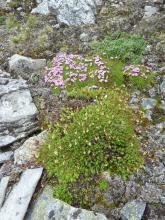
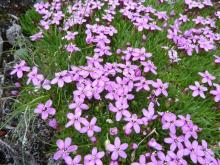
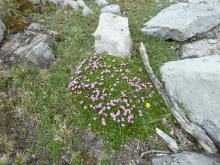

Lots of nice Silene acaulis through the mixed rocky and turfy area at about treeline elevation (which is comprised of a band of larches, Larix lyallii in this area). As can be seen in the last photo, the most common groundcovering plant is a tiny-leaved Salix (S. reticulata or S. vestita, I suppose??):
And up and up...
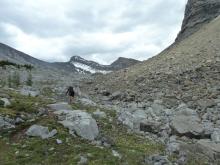
The effort is rewarded with views of the valley ahead...
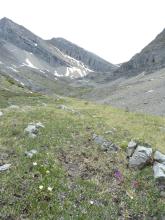
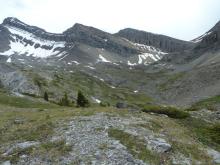
And views of terrain left behind...
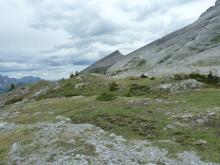

And with a little more upward exertion, we arrive at the first tarn:
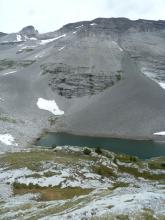
Trond Hoy
Re: HIke #2 - eastern slope Rockies, July 25/11
Tue, 07/26/2011 - 11:07pmA couple of years ago the municipal drinking water of Bergen was contaminated with giardia and a lot of the inhabitants got the disease. It was a shock to everyone, none had anticipated that.
;D
Lori S. (not verified)
Re: HIke #2 - eastern slope Rockies, July 25/11
Wed, 07/27/2011 - 9:12pmMore of the first tarn:
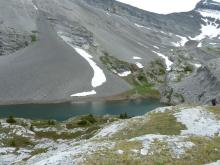
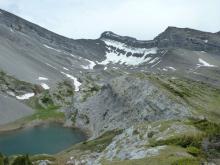
Another looking-back shot:
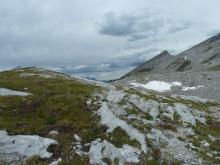
Kruppelholz of subalpine fir (Abies lasiocarpa) on the ridge above the tarn... a handy lunch spot after working up an appetite, with magnificent views in every direction!
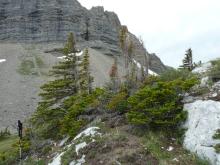
Dryas octopetala:
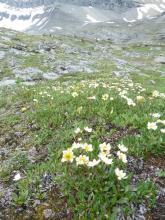
Potentilla uniflora(?), not common in that area; Silene acaulis and alpine turf:
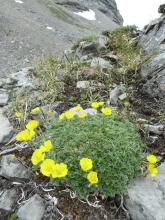
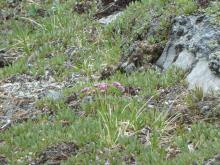
A very tame gray-crowned rosy finch (Leucosticte arctoa), feeding amongst the rocks... presumably a female as it is not very "rosy" at all:
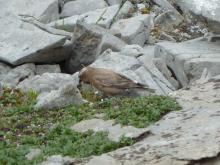
And onward... the snow filling various low spots makes for easy travel...
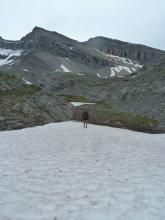
And at the next cliff band, Saxifraga oppositifolia still in bloom, despite this late date...
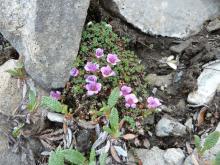
Lori S. (not verified)
Re: HIke #2 - eastern slope Rockies, July 25/11
Wed, 07/27/2011 - 9:34pmDraba sp.(?), in the rocks; Salix sp. in bloom; I make this out to be Cassiope mertensiana (vs. C. tetragona, as it seems to lack the groove at the back of the leaf):
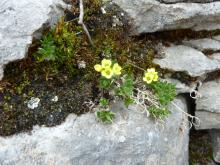
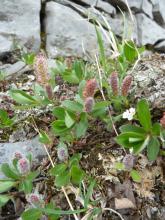
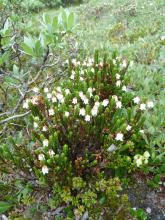
Phyllodoce glanduliflora; Ranunculus pygmaeus, one of the most common plants in bloom at this time:
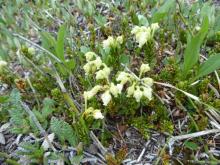
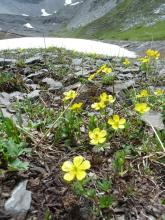
The same stream that we saw far below in the forest, now in the sunshine!
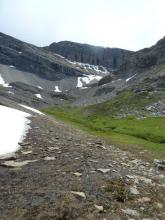
Salix sp. with white-flowered Draba sp.(?); Anemone parviflora; another Draba sp.(?):
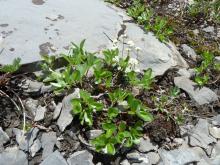
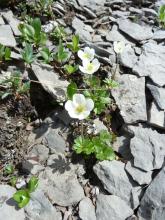
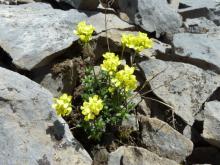
Flowery meadow:
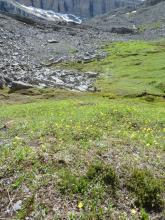
Lori S. (not verified)
Re: HIke #2 - eastern slope Rockies, July 25/11
Wed, 07/27/2011 - 9:54pmSnowbanks feeding the stream:
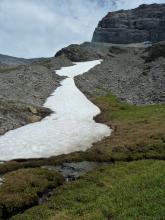
Oxyria digyna:
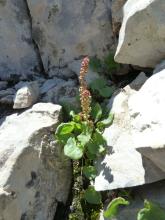
Encouraged by finding a plant still in bloom, I made a point of looking around for more Saxifraga oppositifolia... I found that they occurred mostly in the joints on intact (as opposed to rubbled) north-facing vertical or near-vertical limestone cliff faces:

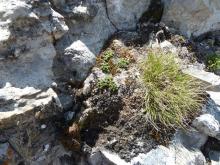
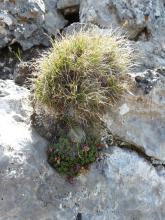
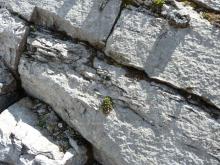
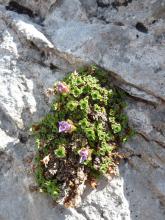
Deep joints in the limestone:
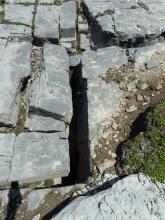
Androsace septentrionalis... with my finger for scale:
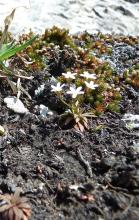
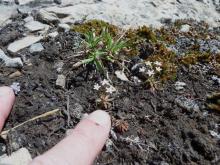
Lori S. (not verified)
Re: HIke #2 - eastern slope Rockies, July 25/11
Wed, 07/27/2011 - 10:07pmContinuing on, some of the views in what turned out to be a beautiful day:
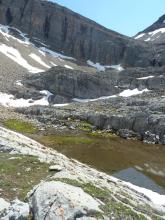
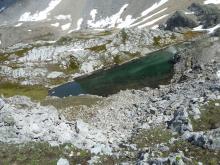
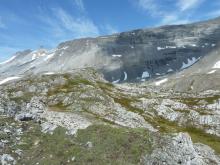
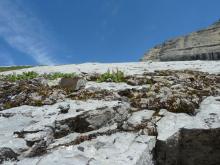
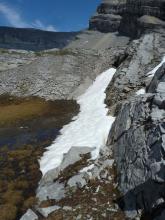
Fossils are very abundant in these outcrops, these being rugose corals and crinoid ossicles (stem segments):
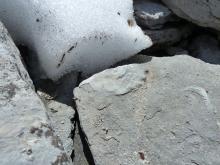
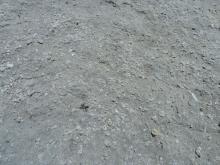
Anemone lithophila:
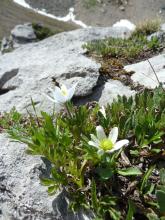
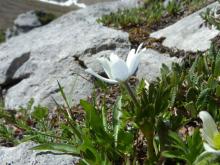
The runoff point, from the highest tarns, to the alpine-meadow stream below...
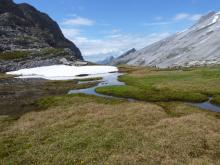
Trond Hoy
Re: HIke #2 - eastern slope Rockies, July 25/11
Wed, 07/27/2011 - 11:36pmNothing beats limestone to create interesting landscape and floral display! The acidic rocks and soil where I usually walk do never show such plethora of plants.
Todd Boland
Re: HIke #2 - eastern slope Rockies, July 25/11
Sun, 07/31/2011 - 4:58pmOf all the times I've been in Peter Lougheed I've never heard of this trail. I tried the Ptarmigan cirque this past July 2 but the snow in the forest was still 5 feet deep! meanwhile, Drywood Mountain in southern Alberta was perfect, having most of the same species in bloom 3 weeks before your trip. Mine you, I have never seen Anemone lithophila and the S. oppositifolia I found were long gone.
Lori S. (not verified)
Re: HIke #2 - eastern slope Rockies, July 25/11
Sun, 07/31/2011 - 5:34pmIt's not a maintained or signed trail. If 20km of very dusty washboard dirt road (Spray Lakes Road, up behind Canmore) doesn't dissuade one, it's just on the other side of the road from the Sparrowhawk picnic site. (NB. Mind you, I sure as h**ll wouldn't drive up there just for a picnic!!) Beyond the big rockfall, there is no trail... though one is rapidly being trod down. (There was no discernible path at all when we started hiking there. Someone has recently marked the incipient trail with rock cairns, as well.)
It's a late spring this year up there, due to the heavy snowfall, but nowhere near so late as last year (which was astounding... many plants only managing in bloom in late August)!
Yeah, I'm too big a wimp to get up there when the Saxifraga oppositifolia are really in bloom... the snow seems too recent still at that time! We rarely manage to catch the tail end of flowering.
Anne Spiegel
Re: HIke #2 - eastern slope Rockies, July 25/11
Mon, 08/01/2011 - 5:52amLooks like a beautiful hike, Lori. Just the sight of all that snow makes me feel cooler here in the sweltering northeast. The Anemone lithophila is a new one for me. Do you ever see Chionophila jamesii? Or perhaps it doesn't grow that far north?
Lori S. (not verified)
Re: HIke #2 - eastern slope Rockies, July 25/11
Mon, 08/01/2011 - 8:31amIt is a fabulous area, Anne - always fascinating for me regardless of the stage of bloom. Glad the snow was cooling for you! ;)
No, Chionophila jamesii doesn't get this far north. Apparently, it's only found in Wyoming and Colorado:
http://www.swcoloradowildflowers.com/White%20Enlarged%20Photo%20Pages/ch...
The plants in my tufa garden have come through another winter, and look fine, but didn't bloom this year.
Lori S. (not verified)
Re: HIke #2 - eastern slope Rockies, July 25/11
Mon, 08/01/2011 - 10:40amI have just raided Stuart's photo collection for a final couple of shots to round off this account...
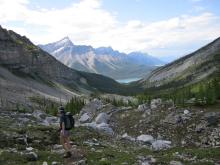
Climbing the hump... the start of the interesting part:
The big scree slope at the end of the trail (for our usual route, anyway):
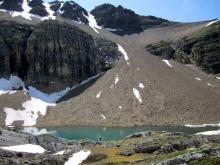
Lori S. (not verified)
Re: HIke #2 - eastern slope Rockies, July 25/11
Sat, 08/13/2011 - 5:30pmWe did this hike again on August 9th/11 to see the changes a couple of weeks can bring...
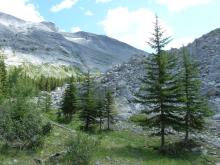
Here are some of the highlights.
Coming out of the trees...
Penstemon ellipticus in fabulous bloom:
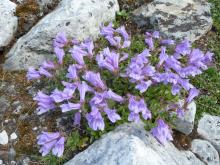
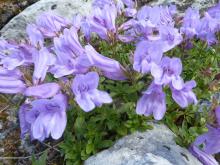
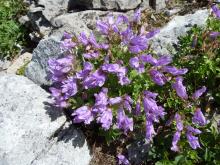
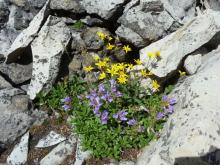
Silene acaulis, in a joint in the rock; coral; Erigeron aureus; in the talus, 3 different Salix; scenery:
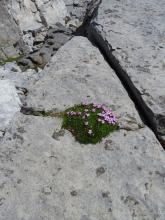
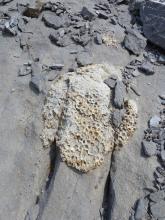
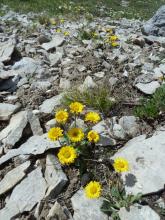
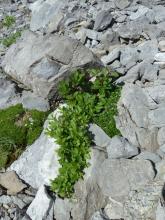
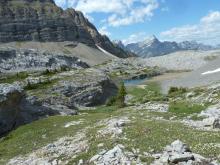
Lori S. (not verified)
Re: HIke #2 - eastern slope Rockies, July 25/11
Sat, 08/13/2011 - 5:41pmMinuartia austromontana (I think); lichen; alpine sedges(?); scene; Tonestus (Haplopappus) lyallii (x2):
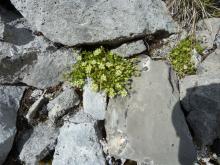
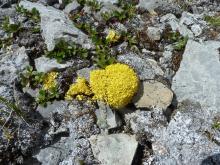
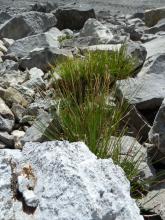
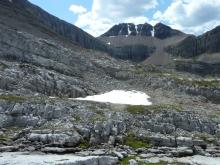
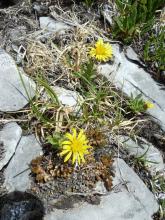
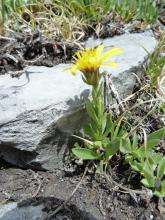
Drainhole; Saxifraga lyallii; Salix; Crepis nana, none yet in bloom here:
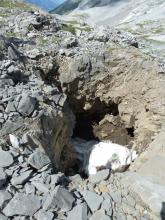

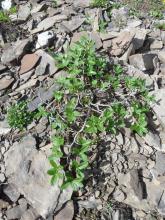
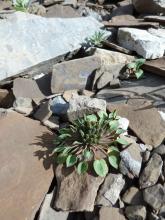
Lori S. (not verified)
Re: HIke #2 - eastern slope Rockies, July 25/11
Sat, 08/13/2011 - 5:48pmMistmaiden, Romanzoffia sitchensis (thanks for the ID, Mark!); Smelowskia calycina; pika; Parnassia fimbriata (x2):
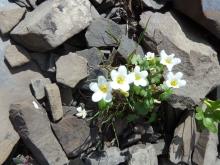
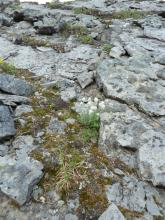
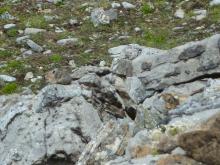
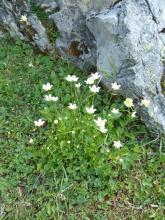

Richard T. Rodich
Re: HIke #2 - eastern slope Rockies, July 25/11
Sat, 08/13/2011 - 6:17pmI'm sure you've guessed that the parnassia has my attention again. Same floral parts, but shaped differently. Love the five yellow hands. A few extra fingers, though ;D
Trond Hoy
Re: HIke #2 - eastern slope Rockies, July 25/11
Sun, 08/14/2011 - 12:47amI grew Romanzoffia once - untill the slugs found it :(
Mark McDonough
Re: HIke #2 - eastern slope Rockies, July 25/11
Sun, 08/14/2011 - 8:10amLori, a wonderful series, great plants and excellent photographs and mountain scenes. Even if I've been responding on the forum so seldom these days, please know that I appreciate such educational and inspiring posts, and I do read through them and often revisit. You provide surrogate wildflower botanizing experiences for those of us perpetually spinning in an unreasonable rat-race of work life.
What gorgeous clumps of Penstemon ellipticus!
Lori S. (not verified)
Re: HIke #2 - eastern slope Rockies, July 25/11
Tue, 09/06/2011 - 7:41pmThanks, Mark!
Last update of this area (unless we do a fall larch hike?)... August 22/11.
Where it starts getting interesting... it's all upwards from here! (Good heavens, it seems I always take a picture of this spot! And worse yet, post every single one of them! :rolleyes:)

The meadows in the hanging valleys that flank the major deeper valley are finally in bloom at this late date, with countless Arnica lonchophylla and others:
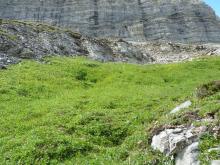
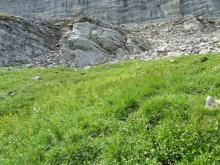
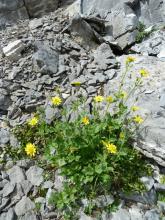
Salix, outlining in a joint in the limestone:
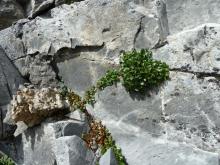
Erigeron humilis, I think (I should check that), and Silene acaulis in new, fresh bloom:
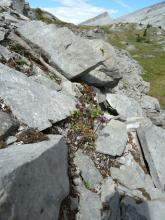
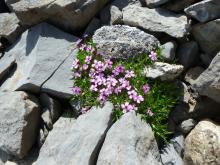
Veronica wormskjoldii:
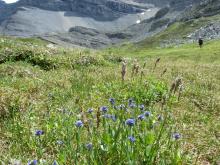
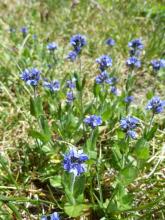
Lots of Hedysarum sulphurascens in bloom too:
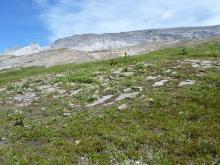
Trond Hoy
Re: HIke #2 - eastern slope Rockies, July 25/11
Wed, 09/07/2011 - 7:01amWhere it starts getting interesting... it's all upwards from here! (Good heavens, it seems I always take a picture of this spot! And worse yet, post every single one of them! :rolleyes:)
With my short memory they all look new to me ;)